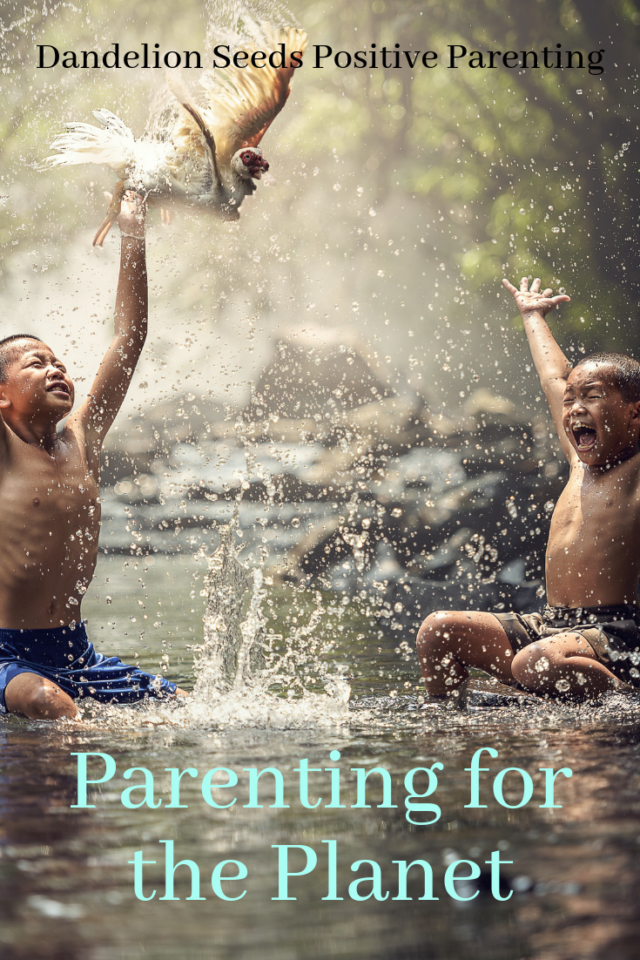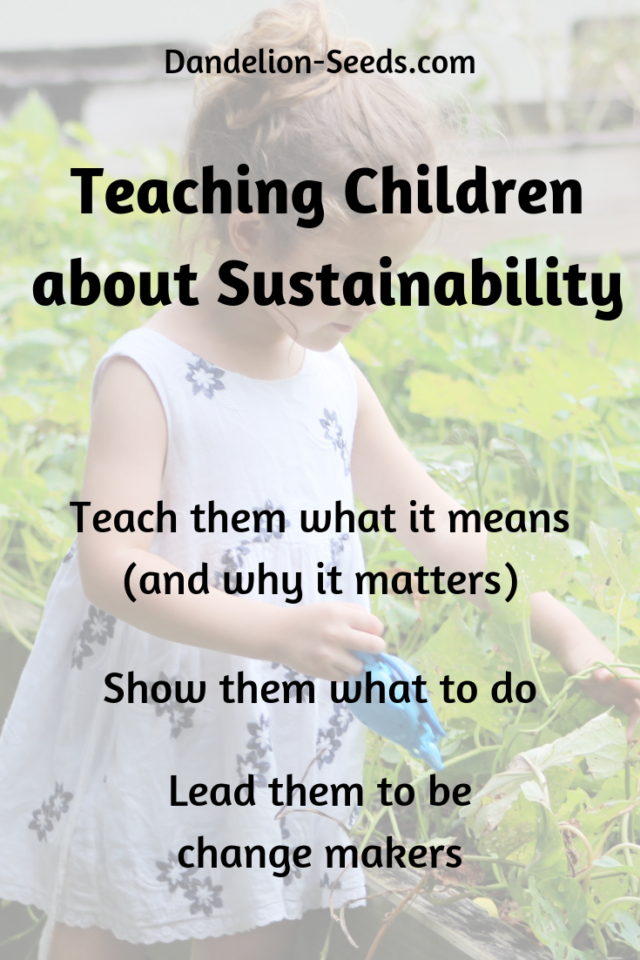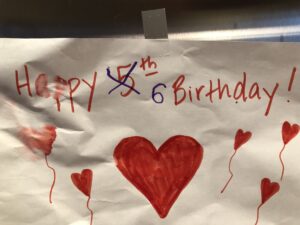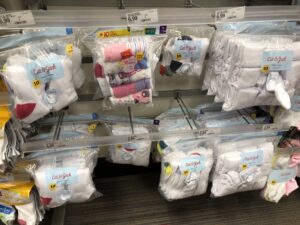
Sign in
Don't have an account with us? Sign up using the form below and get some free bonuses!

Teaching children how to protect the Earth often isn't at the forefront of our minds. We recycle, of course, and we're generally good citizens. In all practicality, however, we're often busy...making lunch. Managing our children's bedtimes. Living life.
I don't write that judgmentally. I'm guilty of it, too.
As part of conscious parenting, however, it's imperative that we do teach kids why we need to protect the Earth. Conscious parenting and salvaging what we can of the planet aren't mutually exclusive. We have a moral obligation to not only teach children how to be kind to other humans, but also to show them how to nurture the global home they share.

We shouldn't just teach kids about the implications of deforestation or melting ice caps, of course ---rather, they need to know about all the myriad factors that play into the future of this "pale blue dot" we call home.
However, it feels a bit overwhelming to have that responsibility on our shoulders, doesn't it?
It is overwhelming to protect the Earth, much less teach little kids about it. I'm not minimizing the enormity of the task. Fortunately, as individuals, we're not supposed to carry heavy burdens alone---especially seemingly insurmountable ones like climate change. Positively altering our world is going to take work from every single one of us as a global community. What matters is that we're doing our part.
There's always something we can do to protect the Earth. Here are three ways that work well as we parent our children: Teach Them, Show Them, and Lead Them.

In addition to modeling for your kids all the ways you protect the Earth, challenge them to find ways to be change makers themselves. See what they come up with. Here are a few examples:

birthday streamers or decorations, wrapping paper or ribbons, take a single "day in the life" and see what you can reuse again another day. I never realized that I'd inherit my great grandmother's habit of saying, "Don't tear the wrapping paper---we'll use it again next year!"---but here I am. (I plan to phase out wrapping paper entirely once what we've been reusing no longer holds together.) Encourage your children to challenge their friends to nix single use items in their homes, too. Frame it as an ongoing scavenger hunt. Every day holds opportunities to rethink that which we used to consider disposable.

Solar panels and electric cars aren't feasible for everyone, and we can't always choose whether our homes are powered by wind turbines. However, until more of those things are commonplace, you can write letters with your children. Make phone calls. Model to your children that communication matters---because their future on this planet matters.
There are so many ways to weave this topic into your daily conversations. Although it's wonderful to have sit-down discussions about how to protect the Earth, it doesn't need to be complicated or heavy-handed, particularly with children who are highly sensitive. Adapt your message to suit your child's ability to process the information thoughtfully and without fear mongering. Starting small is great, particularly for small children. No child is too young to listen. It's all about planting the proverbial seed. It will grow if you let it.
Awareness and understanding go a long way; they're how kids establish their belief systems about what's important.
Here are some simple and effective ways you can teach young children about how to protect the Earth:
What you can say to your child: "I'm turning off the bedroom lights because no one's in there. That's how we save energy. Saving energy helps protect the Earth and everyone who lives on it."
 items to break down. A single plastic bag can take anywhere from 10-1000 years; some studies argue that they never fully decompose. What else can you research together?
items to break down. A single plastic bag can take anywhere from 10-1000 years; some studies argue that they never fully decompose. What else can you research together?What you can say to your child: "We're walking to the library today so we don't use the fuel that's in our car. Saving fuel helps protect the Earth by reducing fumes and protecting the planet's natural resources."
Talking goes a long way for kids. If they don't hear important messages from you, what would they know to look for (or to avoid) in society as they grow up?
It's important for kids to know that they're not too young to care; not too young to help.
Have you heard of Greta Thunberg, a 17-year-old girl from Sweden? She's a climate activist who's inspired marches for young people around the world. She completed an incredible 15-day, 3,000-mile (4,800km) voyage on a carbon-neutral boat across the Atlantic to bring awareness to climate change. She spoke at the United Nations Climate Summit in September 2019. Here's her very compelling speech to the Assemblée Nationale:
Greta's work is inspiring and wonderful, yet she's not the only one who's doing good work to protect the Earth. Young activists are doing important climate work all over the world. Share their stories with your children.
Watch your children's reactions to others' work to learn which elements of protecting our planet speak to their hearts. Then, foster those things. Do they love marine animals? What about their favorite forest creatures? Do your kids enjoy hiking, playing outside in good weather, or boating with Grandpa? See what other people are doing to make enjoying those things possible for your child. Tie those things into your discussions. They're specific. They're memorable.
As with all topics, you'll be more likely to succeed at teaching your message about sustainability if your child feels emotionally compelled to learn. Just like some kids enjoy math for the sake of numbers and others don't care about math until they discover physics, pay attention to what resonates with your child. Show them what others are doing in an area that inspires them. Read books together about ways your children can help protect the Earth (afflinks). Check them out from your local library if you can.
Be it a cigarette butt on the pavement, smoke spewing from a manufacturing facility, or someone acting irresponsibly towards our planet in any way, it's perfectly okay to point it out and say, "Yuck." Explain why it's off-putting.
What you can say to your child: "I don't like it when people leave their trash near the lake. It's dirty and can make the fish and animals here very sick. I want people to do better." Bonus points: pick up the trash and take it to the nearest bin. Pack an eco-friendly hand sanitizer to keep with you if you're concerned about cleanliness.
Kids need to know that adults outside your home care about sustainability, too---lest they feel as overwhelmed as we do. It's hard to feel like an activist in isolation. Show them they're not alone. Find role models they admire (famous or not) and share with them what those people are doing.
Raffi, the beloved children's troubadour and creator of his namesake Foundation for Child Honouring, wrote two wonderful new songs about the climate emergency ("Young People Marching – for Greta Thunberg" and "Do We Love Enough"). Here's his press release. You can stream the songs from here.
I'd love to say "Show kids that we've got this." Although I can't do that, I'll write, "Show them that we're working on it."
The normal order of things is for them to outlive us on a safe and healthy planet.
We can't force kids to be stewards of the Earth; it's our job as conscious parents to model these things for them. They'll follow our lead. As a bonus, the more you instill your messages in your kids, the more they'll hold you accountable, too. Your actions will become their actions as they grow up. They're paying attention now.
"Another day is imminent. Another world is possible." -- Raffi Cavoukian
Sarah R. Moore is an internationally published writer and the founder of Dandelion Seeds Positive Parenting. You can follow her on Facebook, Pinterest, and Instagram. She’s currently worldschooling her family. Her glass is half full.
